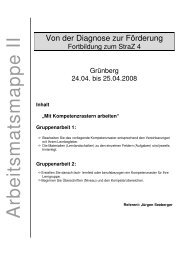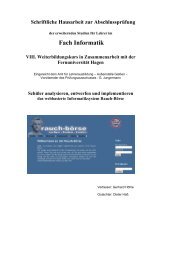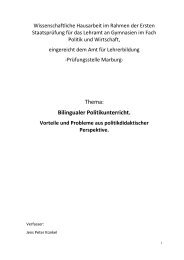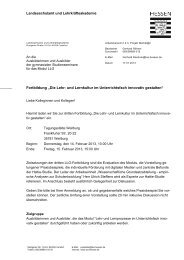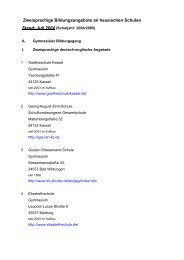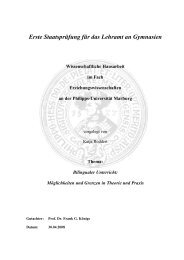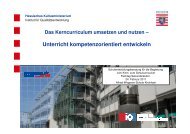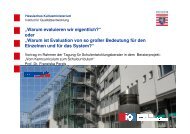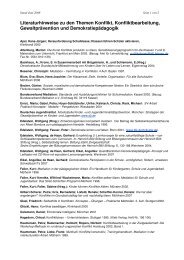PROFILING EUROPEAN CLIL CLASSROOMS
PROFILING EUROPEAN CLIL CLASSROOMS
PROFILING EUROPEAN CLIL CLASSROOMS
Create successful ePaper yourself
Turn your PDF publications into a flip-book with our unique Google optimized e-Paper software.
The Past Decade and the Next Millennium<br />
Hugo Baetens Beardsmore<br />
Vrije Universiteit Brussel<br />
The final decade of the 20 th century has witnessed a liberating explosion of initiatives<br />
in multilingual education. Confidence in the value of plurilingual skills has encouraged<br />
Europeans to break away from the dependence on North American immersion models<br />
for support and justification, enabling parents, schools and authorities to build up<br />
exciting programmes that take account of local, regional, national and international<br />
realities. The result has been that demand is outstripping supply for efficient, contentbased<br />
multilingual education in many countries. Ever more parents are willing to<br />
plunge their children into education partly conducted in more than one language, but<br />
teacher availability, materials provision, curricular adjustment and exit criteria are<br />
struggling to keep up with rapid evolution.<br />
Behind this encouraging development lie globalisation, computerisation, rationalisation<br />
and migration. It is proving ever more difficult to keep up in work, travel, recreation or<br />
information within the confines of a single language, the more so in Europe where<br />
mobility crosses language borders. Hence an increasing acceptance of the need to<br />
break through the restrictions of formal language lessons, which in spite of<br />
methodological progress, rarely produce high levels of plurilingual proficiency for the<br />
majority. Language lessons are vital for accuracy but do not provide sufficient contact<br />
time with a target language and need supplementing with opportunities to use language<br />
in meaningful activities.<br />
The variety of bilingual education programmes now available as models is striking,<br />
while constant monitoring by solid research is providing sophisticated insights into<br />
aspects of learning through a second and third language not known before. Authorities<br />
that never even considered implementing bilingual programmes have at times become<br />
the most supportive of innovation. The Netherlands (as in England and Austria) started<br />
bilingual content-matter education in the nineties, concentrating on secondary schools.<br />
Designers have had to reflect on the implications for final examination strategies. The<br />
Dutch insist on all final secondary exams for content matter being taken in Dutch, to<br />
avoid potential language shift, thereby affecting the curricular distribution of languages.<br />
This illustrates one effect of implementing bilingual programmes with a different strategy<br />
from that used in Germany, where final exams may be optionally taken in the two<br />
languages involved. Walloon Belgium has broken through entrenched resistance to<br />
any form of bilingual education since 1998 by allowing individual schools to set up<br />
controlled forms of content-matter teaching through two languages from primary school<br />
onwards if all the parties involved, parents, teachers, authorities, can guarantee the<br />
solidity of the project. France has encouraged earlier intensified contact with a second<br />
language as a subject while promoting initiatives in varied forms of bilingual education<br />
depending on the region. This is a major break away from the highly centralised, tightly<br />
controlled monolingual education of the past. In border areas, like the Alsace, primary<br />
schools can even offer a 50-50% spread across two languages from the very beginning.<br />
In Spain ever more schools are beginning early second language learning from the age of<br />
3 onwards, leading on to some form of bilingual content-matter teaching in primary<br />
school.<br />
10



